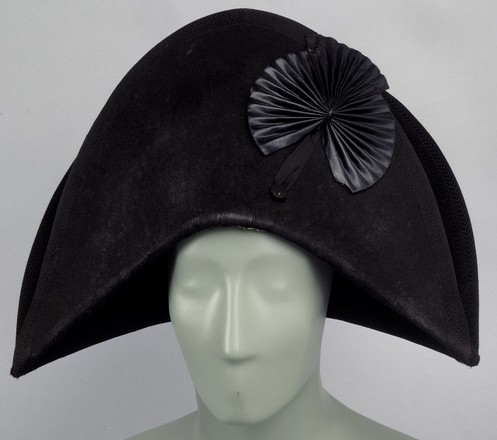Cocked hat
By Wikipedia
By
the twentieth century, the term cocked hat had come to be used more often than
not in official UK usage (uniform regulations) with reference to this shape of
hat (particularly when worn as part of a uniform). In rare instances where hats
were directed to be work side-to-side (‘athwarts’) rather than front-to-back,
the term bicorn tended to be preferred.
The
cocked hat was pinned up at two sides to form a hump-back bridge shape and was
worn perpendicular to the shoulders, with the front end above the face and the
back end over the nape. A cockade in the national colours might be worn at the
right side (French tradition) and a plume might be attached to the top (British
military, c. 1800). Cocked hats were often trimmed with gold or silver bullion
lace and tassels. Naval officers wore them without further decorations, but
those worn by military and civilian officials might be lavishly decorated with
coloured ostrich or swan feathers.



 Back to list
Back to list